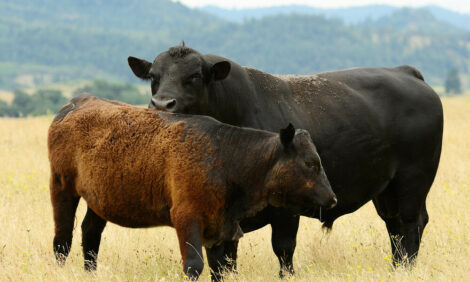



Academics Warn of Aquifer Depletion and Water Value Increase
US - Growing populations, climate change, fixed water supplies and a declining Ollaga aquifer were the issues discussed at the Future of Water Conference last week in Manhattan.Hosted by Kansas State University and the Kansas Water Office
There are many reasons contributing to the increasing need to determine the economic value of water, said Frank Ward, professor of agricultural economics at New Mexico State University.
Several presentations about the Ollaga Aquifer- the mid west's vital water resource- were made at the conference. Also referred to as the mid-west aquifer, the vast underground water table lies beneath parts of Kansas, Nebraska, South Dakota, Colorado, Wyoming, New Mexico, Texas and Oklahoma.
“For agriculture, we combine ‘crop production function’ developed by agricultural engineers and agronomists with crop budgets developed by agricultural economists to generate ‘crop revenue functions,’” said Bill Golden, agricultural economist with K-State Research and Extension.
“The first inches of applied groundwater are much more valuable than the last inches applied,” said Golden, noting that “The implication is, if we save the last inches today and use them in the future as first inches, we might have gains in value and groundwater conservation policy can yield significant future benefits to the producer and rural economies.”
Golden, who led a recent study on water use in southwest Kansas, said that over the period 1975-1999, the value of water increased about .4 percent a year. However, because of a combination of drought and high commodity prices, the value has jumped 9.7 per cent per year since then.
The study also estimated average value of groundwater to producer net revenue ranged from $129.03 per acre foot to $182.17 per acre foot. The values varied depending on crop mix, soil type, precipitation, well capacity, and economic modeling scenarios.
“The implication is that groundwater is as important to the regional economy as it is to the producer,” Golden said.
A study that looked at water use for various purposes suggested that, accounting for only direct water use, dairies are a relatively high-value user of water, generating more than $93,000 per acre foot.
Overall, Golden said, agriculture is the high volume, low value water user. He predicted that in 40 to 50 years, western Kansas farm land will generally be used for growing dryland wheat and grazing cattle.
“I’m not usually in favor of more regulation, but something more drastic needs to be done about the diminishing water supply in the Ogallala,” said Kansas farmer Jay Garetson, who attended the conference. He is a member of the Kansas State Board of Agriculture.
Garetson credited Gov. Sam Brownback for signing two bills into law this year designed to conserve the state’s water supply and extend the life of the Ogallala, but believes more action is needed.
Because the Ogallala is out of sight, it’s also out of mind for many citizens, he said, adding that if the water was rapidly being depleted from a visible lake, action would probably have been taken long ago.
TheCattleSite News Desk


